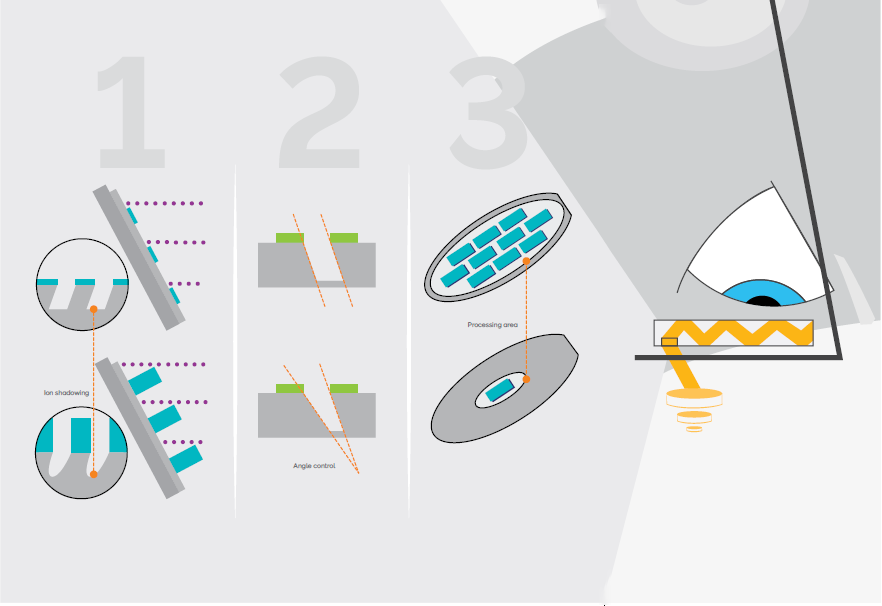 Part of the Oxford Instruments Group
Part of the Oxford Instruments Group
Expand
Collapse
Due to the slanted structure, the process is highly subjected to ion deflection which results in asymmetric etching and therefore loss of control over the angle. However, not all techniques are equal. Many techniques based on plasma technology are either complex, costly or cannot guarantee a good etch rate and profile uniformity over a large area. Ion beam etching offers the best way of providing physico-chemical etch directionality. Ion beam processing operates at much lower gas pressures than other plasma techniques. This allows for less gas scattering and better profile control.

The periodicity of the features depends on the application. For AR headsets, the typical period for waveguide combiners is around from λ/2 to λ which results in grooves around 100 to 200 nm. These dimensions require the use of finer lithography equipment such as E beam lithography or Nano imprinting. Without a clearly defined mask structure, defects can be transferred to the features during process. It is therefore critical to characterise the profile of the mask before etching. Common SEM characterisation can be used to image the mask however the evaluation has to be done on the full surface of the wafer. Once the mask processing is well understood and controlled, optimum yield can be achieved during the slanted etching process.
The target uniformity across wafer is defined by the requirement of the application which includes the die size, and number of dies per wafer. However, depending on the design on the etching reactor, the area matching the target uniformity might not correspond to the full wafer size. The edge exclusion can be as large as 40mm. The large edge exclusion results from non-uniform ion distribution. When dry etching at an angle, the etching depth tends to be higher in the area closer to the ions source. Equipment manufacturers can either adjust the ions distribution or use ion shadowing to compensate for the non-uniform ion distribution. Both methods can be finely tuned to maximize the uniformity of the process.